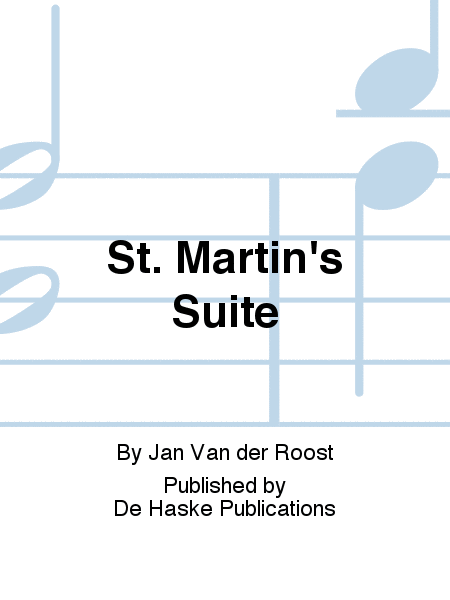St. Martin's Suite
-
Ships in 2 to 3 weeks
Details
Description
SKU: BT.DHP-0920404-020
Composed by Jan Van der Roost. Inspiration Series. Concert Piece. Set (Score & Parts). Composed 1992. De Haske Publications #DHP 0920404-020. Published by De Haske Publications (BT.DHP-0920404-020).This suite was composed by Jan Van der Roost on the occasion of the 110th anniversary of the ‘Koninklijke Sint Martinusfanfare’ (Royal Saint Martinus Fanfare Band) from Halle (Belgium). The composer was required to create a suite in three movements based on three images associated with the ‘Sint Martinusfanfare’ from the small town of Halle in the province of Brabant. The first movement (Andante Pomposo) describes Martin, a soldier in the Roman army. In Andante Moderato we see the image of Martin, who become a Christian and chooses to devote his life to God. In this movement, the composer was inspired by the Brabantine gothic art of the Sint Martinus Basilica in Halle. Thecontrast between the dark Basilica and the statue of Our Lady between the soaring pillars will vividly come to life for audiences of this descriptive piece. The final movement, Allegro Molto Vivace’, could have been an image for a frivolous peasant in the Halle carnival. In a triptych about St. Martin it is more fitting to refer to it as an apotheosis, the crown on the pastoral work of Martin, Bishop of Tours, Patron Saint of the Fanfare Band and the Basilica of Halle.
Jan Van der Roost komponierte diese Suite anlässlich des 110. Geburtstages der "Koninklijke Sint Martinusfanfare" aus Halle (Brabant).
Auftrag des Komponisten was es, ein dreisätziges Werk zu schreiben, dessen einzelne bildhafte Teile einen Bezug zur Sint Martinusfanfare herstellen sollten. Der erste Satz, ein Andante Pomposo, beschreibt Martin, Soldat im römischen Heer. Das darauffolgende Andante Moderato zeichnet ein Bild von Martin, der sich zum Christentum bekehrt und sein Leben Gott widmen möchte. In diesem Satz ließ sich derKomponist von der brabantischen Gotik der Sint Martinus Basiliek in Halle inspirieren. Der Kontrast zwischen der dunklen Basilika und der von hoch emporstrebenden Pfeilern umgebenen, strahlenden Statue der Mutter Gottes wird für den Zuhörer in diesemausdrucksvollen Bild leicht nachvollziehbar.
Der Schlusssatz, ein Allegro Molto Vivace, hätte die musikalische Beschreibung eines ausgelassenen Bauerntanzes während des Karnevalsumzugs in Halle sein können. In einem dem Heiligen Martin gewidmeten Triptychon ist es jedoch angemessener, in einerApotheose darauf zu verweisen, als Krönung des pastoralen Wirkens des Heiligen Martin, Bischof von Tours, Schutzheiliger des Auftraggebers und Stifter der Basilika in Halle.

 Share
Share